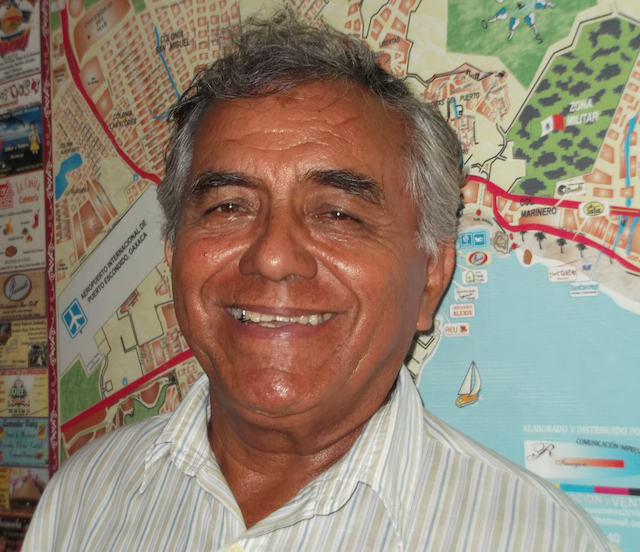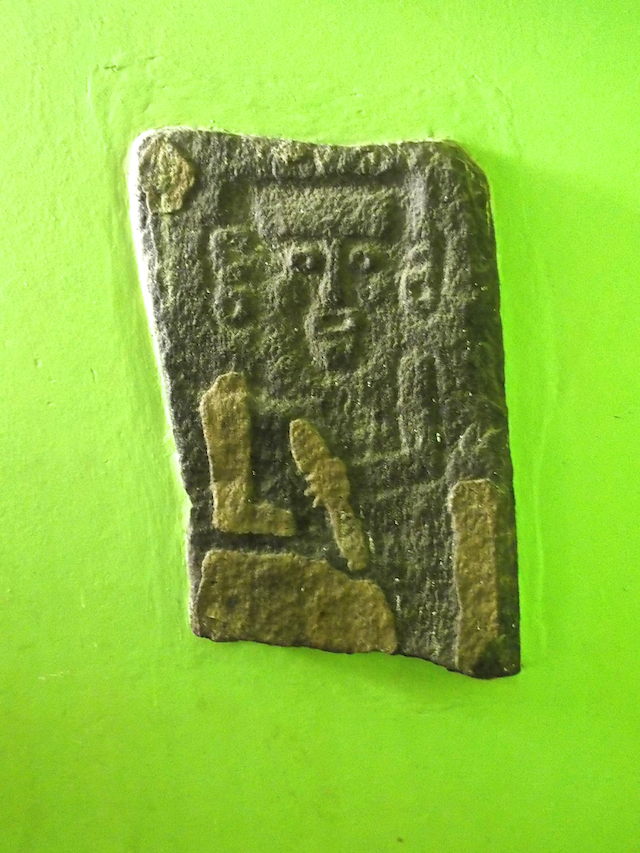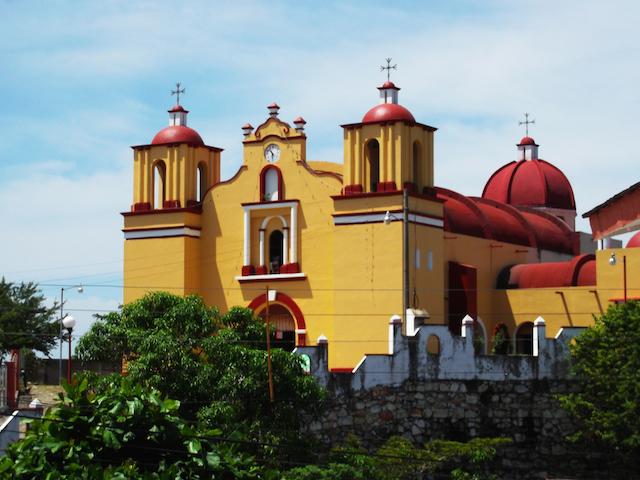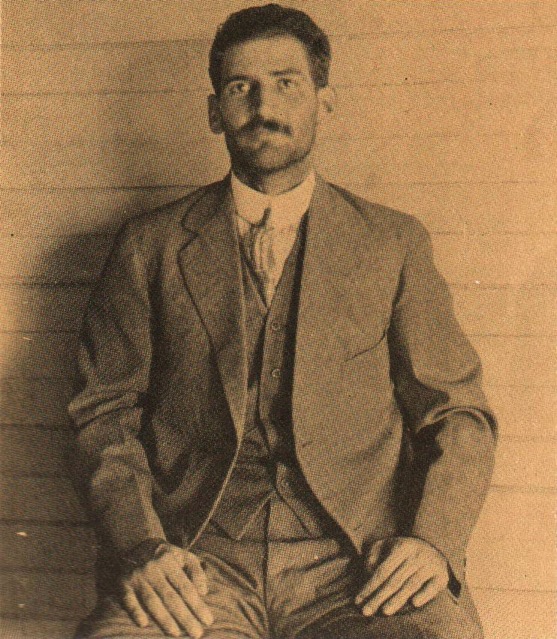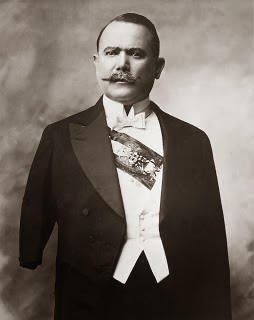San Pedro Mixtepec in Mexican History
The Oaxaca Coast has been the crossroad of many cultures and ethnicities for thousands of years. According to the archeologist Raúl Matadamas Díaz of the National Institute of Anthropology and History (INAH), related artifacts have been found in Huatulco and Guerrero that date back to around 2,000 BC. More recently, the Coast has been settled by Chatinos, Zapotecs, Mixtecs and Africans. The latest wave of migration to the Oaxaca Coast has come has from all over Mexico, as well as Canada, the U.S. and Europe.
Professor and two-time president of San Pedro Mixtepec, Eleuterio Gopar Martínez has written the definitive history of the municipality from pre-Hispanic times to the present: Acercamiento microhistórico al pueblo de San Pedro Mixtepec. (Available at Noticias Fabian, Library of UMAR, and Hotel Pargo’s). The following are a few highlights from the book. The section on coffee production will be discussed in a future issue of the magazine.
Chatinos, Zaptotecs and Mixtecs all lived in the region that is now San Pedro Mixtepec. However it was as a Zapotec community that it came under the sovereignty of the Mixtec señorio (kingdom) of Tututepec sometime after 1,000 A.D. (By the time of its conquest by the Spanish in 1522, Tututepec controlled all of the coast and the Southern Sierra Madre from what is now the border with Guerrero to the Isthmus of Tehuantepec.)
In 1629, San Pedro Mixtepec received official recognition (título primordial) from the Spanish Crown as a República de los Indios (a semi-autonomous indigenous community responsible for collecting taxes for the Spanish). Its administrative center was then in the Cerro de la Campana between Santo Domingo Coatlán and San Sebastián Coatlán. From there it moved to the plain of Cieneguilla (now in San Sebastián) and finally, in 1723, to its current location in the valley of the Anonas. Although the move was not voluntary and involved losing land in the mountains, it did bring the town closer to territory it claimed on the coast. Unfortunately, the título primordial that gave Chila and Manialtepec to San Pedro was eaten by worms and for a while Jamiltepec was able to obtain this rich agricultural land.
During the Colonial period the Spanish were allowed to own land on the coast but not in the Repúblicas de los Indios. So it was that beginning in the 16th century Chila, along with its neighbors to the west, became a center of Spanish cattle ranching with most of the labor supplied by African slaves, while the people of San Pedro dedicated themselves to farming. Many slaves escaped to the mountains and joined the local communities; the mestizaje of the region is mostly a mix of people of indigenous and African descent.
From the Colonial period up to the 20th century, an important trade route connecting the Coast to Oaxaca City went from Chila to San Pedro and then on to Nopala, Juquila, San Gabriel Mixtepec, the Coatlanes and finally Miahuatlan. This was also the route used to bring cattle up to the Central Valley.
Puerto Escondido and the Punta de Zicatela enter recorded history in 1793 when they were the site of a shipwreck of a vessel traveling from Peru to Acapulco. The Spanish had installed lookouts at regular intervals from Nexpa to Huatulco, and it fell to the Zicatela lookout to help the crew and protect the cargo from thieves.
On July 2, 1813, during the war for Independence, a contingent of 300 Spanish troops beat the insurgents in a battle fought in the center of the town of San Pedro. There was also fighting in the region in 1866 between the Emperor Maximilian’s forces and the Republicans. San Pedro Mixtepec appears not to have taken sides during the Revolution from 1910 to 1917 but rather went along with whatever faction was in power at the time.
THE CAPTURE AND ESCAPE OF GENERAL MAYCOTTE IN SAN PEDRO MIXTEPEC
From December 1923 to March 1924, Adolfo de la Huerta led an unsuccessful uprising against the government of Álvaro Obregón. The rebels had the support of half the army and the fighting was fierce, thousands of men died in battle. The victorious Obregón ordered the execution of all the rebel generals, including his compadre Fortunato Maycotte who was, in the words of Enrique Krauze, “hunted down like a deer” as he fled across Puebla, Morelos, Guerrero and Oaxaca. Here is Gopar Martinez’s account of Maycotte’s capture and escape in San Pedro Mixtepec:
Traveling on footpaths at night, General Maycotte and his entourage arrived at the rancheria of Guarumbo in the Municipio of San Pedro Mixtepec. Since the new arrivals came with a lot of money they were given food, lodgings, and protection for several days. Maycotte sent the owner of the ranch out to buy provisions while he waited for the opportune moment to continue his flight to Puerto Ángel from where a ship was to take him out of the country.
According to the oral history of the people of San Pedro, suspicion was aroused when someone from the ranch came to town to buy provisions for 10 men, given that only three to five people lived on the property.
The municipal authorities were alerted and a posse was organized to put the ranch under surveillance. After three or four days of observation, the decision was made to capture the intruders… but they were soldiers and obviously armed… so the San Pedro men waited until they were bathing in the river and took them by surprise. Maycotte and his soldiers were taken to the San Pedro jail, and the municipal president sent a message to Obregon’s government that one of his worst enemies had been taken prisoner.
Maycotte, however, still had a lot of silver coins in his possession … so he offered silver to the authorities and they opened the doors of the jail in the middle of the night and the prisoners escaped to Chila.
Another version has it that the vice president (síndico) freed them during the night because he was moved by the prisoner’s words… [According to this version] Maycotte came without funds and perhaps the síndico was convinced by the honesty of the principles for which he had fought against Álvaro Obregón.
When President Obregon’s envoys arrived in San Pedro two days later, they were greatly surprised to find that there were no prisoners… The síndico said that they had escaped. The municipal president, the síndico and the other officials were quickly put in the jail. After an investigation only the president and the síndico were held responsible. The síndico was sent to a jail in Oaxaca, but the president and the other officials were freed.
The fugitives made it to Puerto Escondido… and continued their journey along the beach… They were finally captured on the beach in Escobilla, Tonameca, and there they were executed by order of General Obregón. These events occurred in March of 1924.
The síndico served 20 years in prison in Oaxaca, and then he returned to the community where he died in 1944.

